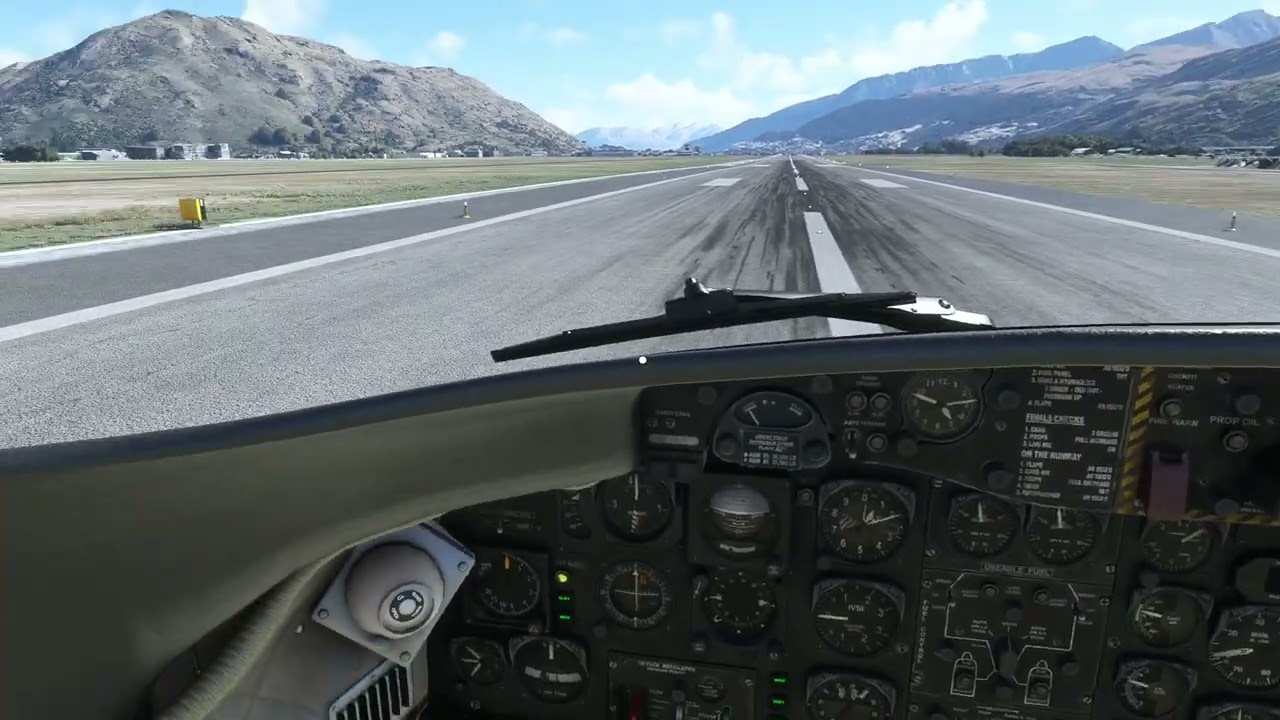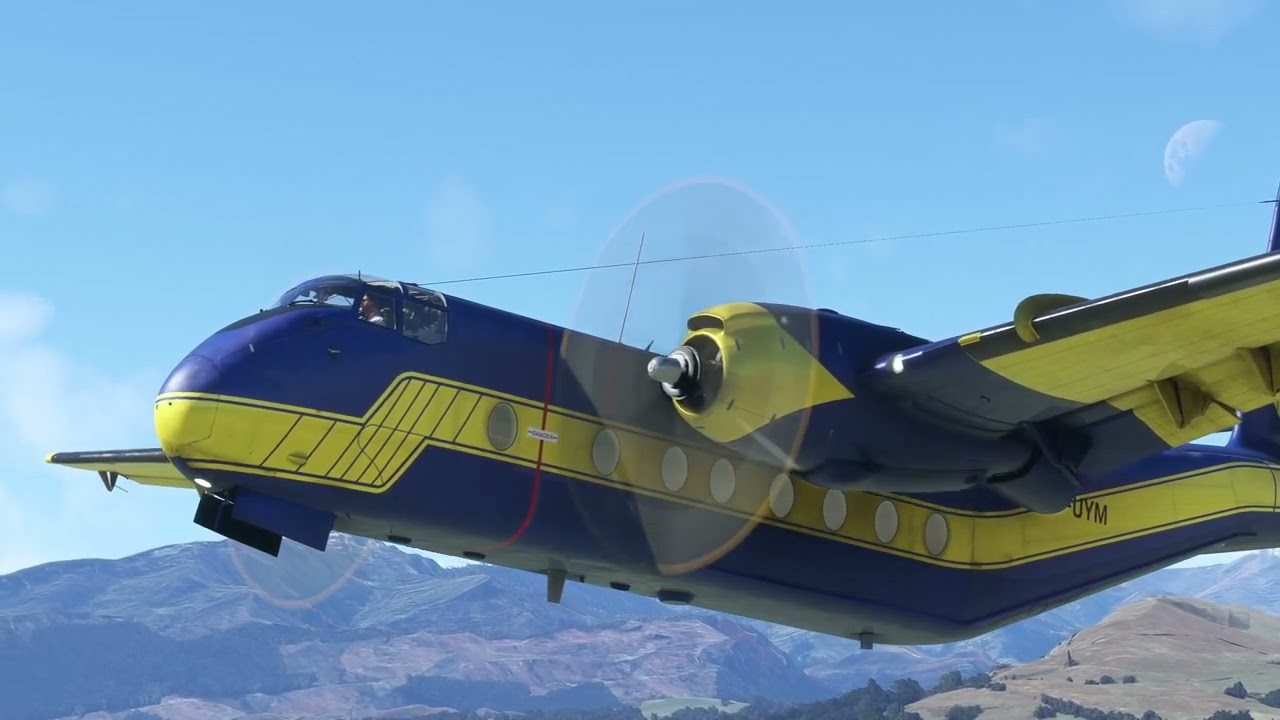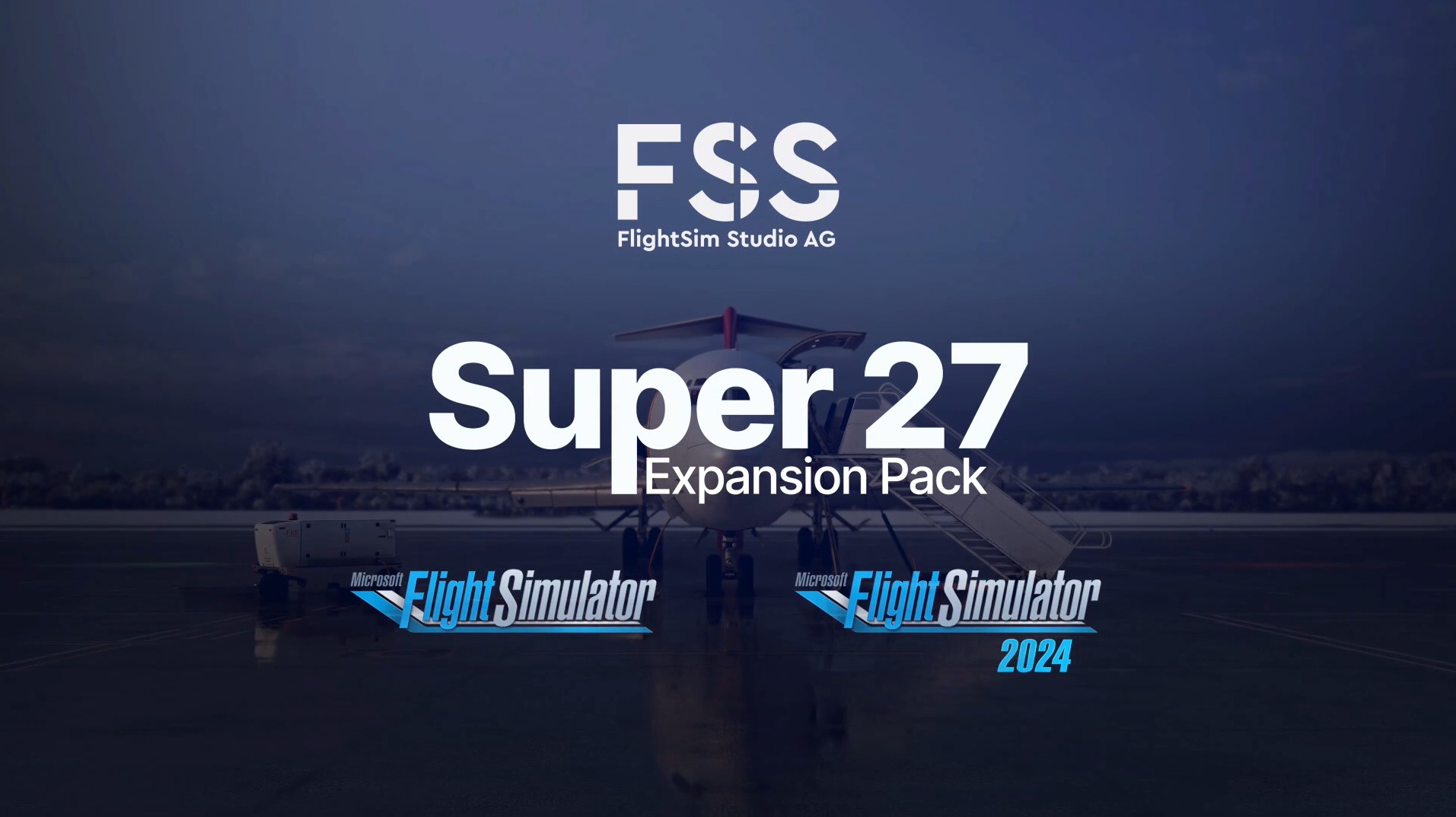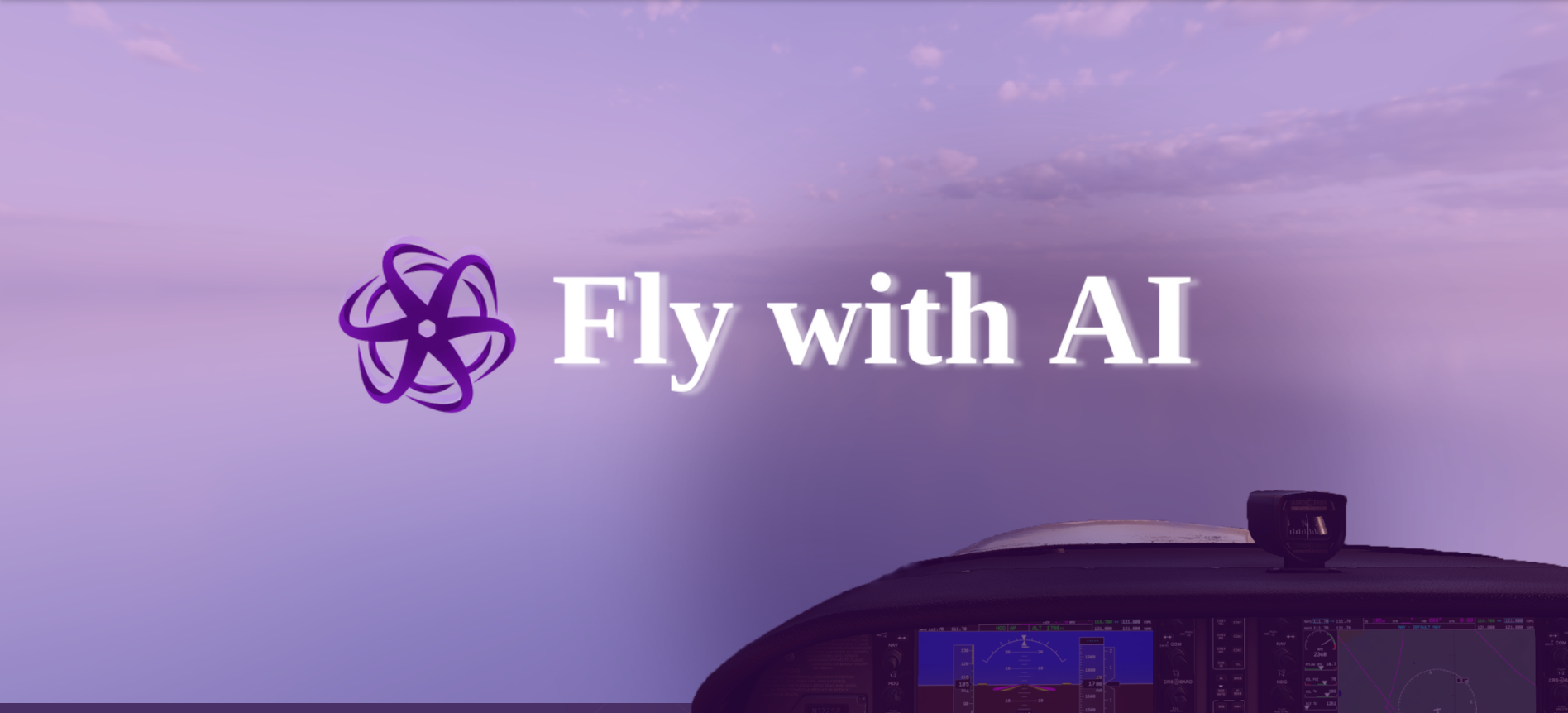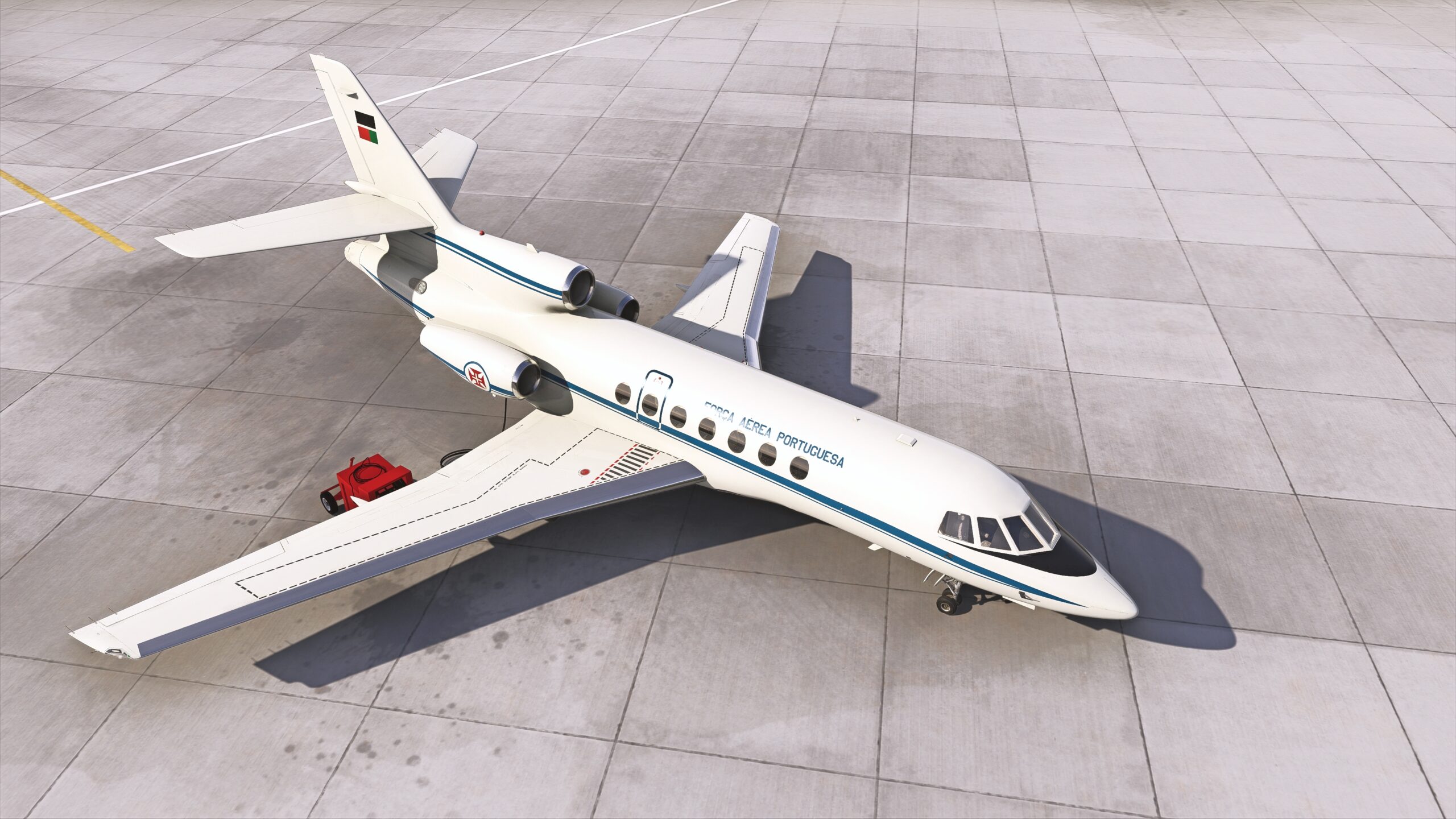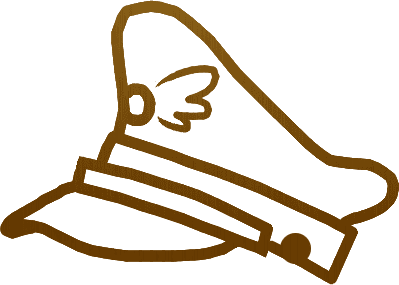Microsoft and Asobo have teamed up with Orbx to bring the De Havilland Canada DHC-4 Caribou to Microsoft Flight Simulator as the latest entry in their Local Legends series. It was released alongside the New Zealand World Update in February of 2023. This is an aircraft that is defined by its performance, versatility, and unique looks, and now you and I can get it into our simulator.
Now, I did not sit by eagerly refreshing FSNews awaiting for the DHC-4 Caribou to land in MSFS. I did not run breathlessly to my PC to download this on the day that it was released. Heck, I didn’t even know that the Caribou existed until it was announced by Microsoft. My reaction was, like many, “What the heck is that?” Through my time with the DHC-4 Caribou for MSFS, I have discovered that this aircraft is wonderful. It is unique, it is exciting, and it’s worth a place in your hangar.
And yeah, it still looks like… this. But in a good way, I promise.

Review setup
You know the drill, setup and context first! The Microsoft/Orbx DHC-4 Caribou for MSFS was reviewed on a PC copy of Microsoft Flight Simulator running a Ryzen 5800X3D and RTX 3080. I used a 1440p Ultrawide monitor, the Honeycomb Bravo throttle quadrant, and the Thrustmaster TCA Boeing yoke alongside Thrustmaster TFRP rudder pedals. I have been flight simming since MSFS released in 2020, and I hold no real-world pilot’s license. All currencies mentioned in this review are in $USD. The reviewed copy of DHC-4 Caribou for MSFS used was not provided by Microsoft, Orbx, Asobo, or any affiliates. As always, the opinions and conclusions expressed in this review are my own.

Work-cervid of the swingin’ 60s
Despite being the latest Local Legend released in the New Zealand update, the DHC-4 Caribou was designed and manufactured by a Canadian company in response to a United States military specification. Known as either the CV-2 or C-7 in US service, the type was used extensively as a tactical transport in the Vietnam War by both the US and the Australian Air Forces. It was first flown in 1958 and several flying airframes still survive today.
It impressed its operators and outperformed even the venerable C-130 Hercules in its short-field performance, and remained in military service until the last Caribou was retired by the RAAF in 2009. In civilian service, it is employed in rugged country where it excels with its capacity and performance, although it is often replaced by newer turboprop STOL (“Short TakeOff and Landing”) aircraft such as De Havilland’s own Twin Otter.
Purchase and Features
The Microsoft/Orbx DHC-4 Caribou is available solely through the MSFS Marketplace for $14.99. Deluxe and Premium Deluxe Edition owners get a small discount on this aircraft. Installation is trivial: just install via the Marketplace or Content Manager and you are ready for takeoff. Seven liveries are included, and although generic, I quite like the selection. You get liveries for both civilian and military types, as well as a plain white livery for personal registrations or easy painting. Despite being a first-party airplane, the DHC-4 Caribou for MSFS does not come with the traditional “Aviator’s Club” livery. There are no “extras” with this plane – no EFB, and no external equipment either. However, I don’t miss these omissions, especially at this price.
Textures and modeling
While the original airframe won’t win any beauty pageants, the Microsoft/Orbx DHC-4 Caribou for MSFS oozes that rugged, purpose-built charm. The model and texture staff have done a wonderful job of making this aircraft feel like it has been through a lifetime of heavy use just from the externals alone. The skin is dulled and warped with age, with weathering/dirty textures applied smartly and in places that make sense. Even the most pristine liveries, dramatically painted in bold colors, don’t shy away from the Caribou’s pedigree as a blue-collar hauler.


That said, the Caribou’s external textures and model aren’t setting a new standard. But for the $15 asking price, I’d say that they are more than acceptable. Engines are modeled with some weathering effects on the crankcase and propeller hub. These effects, and the propeller model itself, are about the standard fare for Microsoft Flight Simulator in 2023. There are a few cases here and there of incomplete or rushed textures, especially around the wing flaps. On close inspection, it is apparent that the texture artist missed a spot or two, but I had to hunt in nooks and crannies to spot these areas. Landing gear bays are modeled simply, but it’s effective – everything you’d typically look at is up to snuff and it’s only when you look too closely are the simplistic models revealed.




That’s really the whole story with the Microsoft/Orbx DHC-4 Caribou’s external: excellent, at a typical viewing distance. Zooming in will reveal plenty of deficiencies, but you really do have to hunt for them. And it’s at those typical distances where the PBR texturing really shines, bringing out the character of the Caribou in every flight. I could be justly accused of nitpicking here, as there aren’t many $15 aircraft that meet the same bar. Certainly, this is worthy of the standard set by other aircraft in Microsoft’s first-party lineup.

Cockpit
Inside the cockpit, there is none of this equivocation – it’s excellent. The dashboard and instruments in particular are lovingly done. Every switch and button is modeled and textured with the same character that caught my eye externally – but now, it stands up to close inspection. I really appreciate the special attention that was given to the wear and tear caused by crew usage throughout the years: knobs are rubbed raw, switch tips are polished and labels are rubbed in accordance with where a pilot’s busy hands would actually go.



This same attention to detail in the DHC-4 Caribou’s internal textures extends to the circuit breaker and switch panel behind the pilots, where wiring harnesses snake across the bulkhead into imposing avionic/radio boxes, and you can look back into the fully-modeled cabin. Yes, the cockpit door can be opened and closed, and once you’re in you get a wonderful, utilitarian cabin that’s done to about the highest standard you can expect in MSFS. It’s certainly lower resolution than the cockpit but that is generally to be expected, and it certainly gets the job done. I appreciate the little details in the cabin like pillows on the stretchers, tied-down ramps, and vacant seatbelts. The rear door is fully operable both on the ground and in flight, so you can perform the DHC-4 Caribou’s historical duty as an airborne troop carrier.


The DHC-4 Caribou’s night lighting is basic but adequate. The instruments are illuminated nicely and the dome lights fill the cockpit with a nice, even glow. You don’t get the same level of night lighting customization with movable, mounted lights as on some other add-ons, but it’s perfectly adequate and I don’t feel like anything is missing. It’s a rather nice atmosphere at night!
In-sim performance
The DHC-4 Caribou for MSFS performs as smoothly as the best aircraft in the sim. During my time with the aircraft, I experienced no serious stutters or hitches. I was able to fly it into strenuous sceneries with no issue. This is generally to be expected for aircraft of this size on my PC, but it’s still worth mentioning. I always take the position that good performance is an essential part of enjoying an add-on, and if some of the minor model/texturing shortcomings I mentioned earlier are in service of this smooth performance, then I will happily take that deal.
Sounds and systems
The Microsoft/Orbx DHC-4 Caribou for MSFS has an excellent set of sounds, but in my opinion, the engines lack something special. It is powered by two of the venerable Pratt & Whitney R-2000 Twin Wasp engines, tuned to provide almost 1,500 horsepower each. The thundering sound of this iconic engine, along with the tearing of its massive three-bladed propellers, is captured to the same standard as default aircraft and other add-ons around this price range, but unfortunately, still leaves something to be desired. Take a look and listen here to these takeoff examples, in both interior and exterior views.
While powerful, the sound set fails to hit the same deep, chest-shaking notes that other radial-engined aircraft produce in MSFS. Overall, they sound rather too even and smooth for an engine of this vintage, and they are all too quiet from the cockpit view. A Twin Wasp with these massive propellers should tear giant, rumbling holes through the air and the Caribou’s just lack that drama. I want to be clear that I don’t think the sounds are bad. In fact, the other sounds for systems such as flaps and the rear door, switches, dials, and ambients/ground roll effects are quite excellent. The engine sounds just don’t add to the experience in the way I feel they should – but they also don’t meaningfully detract from it.
I want worse engines
Buckle up, time for more radial ranting. There are very few radial-engined aircraft in MSFS that capture the temperament and fire of old engines very well, in my opinion. Every one of them is far too easy to start and lacks the smoke-belching drama you’d expect. Most of them run too smoothly in operation and with few exceptions do not require any special care or attention. Maybe I am being a bit cantankerous here, but I am just longing for a classic radial engine that really reaches the heart of what makes them special.
The Microsoft/Orbx DHC-4 Caribou is no exception and is in fact one of the simpler radial-engined aircraft in the simulator. There is no drama on engine start, lacking even the typical pre-ignition propeller rotation and only a puff of smoke. Starting is as simple as hitting the ignition, and the engines roar to life almost immediately. Again, it’s far from a terrible experience, but in an aircraft otherwise oozing with character, I think it’s easier to notice this small lapse.

Systems depth
Although the engine simulation is skin-deep, many other systems are modeled quite well. Very few aircraft in MSFS have operable circuit breakers, let alone at the $15 price point. In particular, Microsoft/Orbx have modeled a great deal of the electrical system of the DHC-4 Caribou for MSFS, and it shows. You can cause some failures by popping breakers, mainly for instruments and lights.
Almost every button and switch on the dashboard is operable. Navigation is provided by a VOR/ADF stack as well as a GNS430 GPS unit, updated with the Working Title enhancements from Aircraft & Avionics Update 1. I did not encounter any issues with navigation equipment during my time with the DHC-4 Caribou for MSFS, and the radios worked as expected interacting with the in-game ATC. While you do have ILS capability and can fly fully IFR, there is no autopilot to assist you. And with period-accurate instruments that lack the readability of modern avionics, this is still an aircraft that is best suited for visual conditions – nicely complimenting the excellent visibility from the flight deck.
The rear cargo door is fully animated to multiple positions, accompanied by realistic sounds. The landing gear reacts well to terrain with good shock absorber compression, and the propeller discs look great with animation looping almost undetectable, especially at higher framerates. Control deflection of the massive trailing-edge flaperons, as well as the trim tabs, are also correctly animated.

Flying the DHC-4 Caribou
For all of my (totally level-headed) complaints about the lack of excitement in the engines, flying the DHC-4 Caribou for MSFS is a wonderful, singular experience. Microsoft/Orbx have managed to faithfully capture the feeling of dragging this ungainly beast into the air and back down again, and every moment is a delight.
The DHC-4 Caribou absolutely feels like a heavy aircraft. The inverted gull-wing design incorporates significant dihedral, resulting in a very stable aircraft. Despite the large, long ailerons, high aspect-ratio straight wings like this can often be too stable and therefore unmaneuverable, which would not be suitable for this tactical combat transport. Microsoft/Orbx’s flight model then also correctly translates this stability into a reluctance to roll without liberal use of the massive rudder – De Havilland’s answer to getting the Caribou turning on a dime with coordinated inputs.

The control authority offered by the rudder does make the yaw quite sensitive, but it’s easy to trim and keep flying straight in both crosswind landings and engine-out scenarios. The sensitivity curves for my yoke and pedals were tuned in well for modern airliners but actually felt right at home with the Microsoft/Orbx Caribou for MSFS. The responsiveness of the controls changes dramatically with airspeed, especially roll – not many add-on aircraft in Microsoft Flight Simulator accurately capture the tendency for some controls to become less effective at lower airspeeds.
ExSTOLing its virtues
And the DHC-4 Caribou excels at lower airspeeds. This is a STOL aircraft and despite its size, it can get into some pretty impressive places. As this released with the New Zealand update, I had a blast flying into tiny bush strips such as George River, and paying an up-close visit to Hobbiton where it effortlessly landed and took off again on the side of a hill. The controls become heavy as you slow down, and you can start to “wallow” if you’re not thinking ahead with your airspeed, but this is exactly the challenge that you’d expect from this type of aircraft.

Especially with flaps extended, the Caribou for MSFS has a ton of lift and a lot of surface area to react to the physics-based air currents and wind. The vertical stabilizer acts like a massive sail in a strong crosswind, weathercocking strongly and also rolling the plane over if you do not apply corrections. Mountain flying is extremely exciting, with gusts catching one wing or the other, pushing you all across the sky. The tools the Caribou provides in its absurdly large control surfaces are well-simulated by Microsoft/Orbx. Once you start to get the feel for how they respond as the conditions change, flying the DHC-4 Caribou for MSFS is an energetic dance between you, the plane, and the sky.
Conclusion
Microsoft Flight Simulator is starting to reach a point where we as sim pilots get to be choosy about what aircraft we buy. Even in the category of Twin-Engined STOL Aircraft, the Microsoft/Orbx DHC-4 Caribou for MSFS faces some stiff competition. With many choices available to fill the role, the aircraft I choose to fly on any given day is often dictated by the character and unique experience that it can provide in the simulator. The Caribou is far from the only classic twin that you can get into rugged, backcountry airstrips, but it does so with style and aplomb unmatched by its more modern, traditional-looking counterparts.
I think that part of it is the ungainly, disproportionate appearance that draws me back to the Caribou. Part of it is the rasp of the classic radials, as much as I think they can still improve. It’s the war-weary interior, and it’s the response of the controls. It’s the feeling of the cargo door opening in-flight and it’s the sight of a twin behemoth rounding a bend in a canyon it has no right to navigate. The DHC-4 Caribou is the tired old workhorse still toiling away, unafraid of whatever harebrained idea I have for it today. It wants to fly, and it wants to be flown, and if you’re ready for it – I can unreservedly recommend that it join your own fleet.

Feel free to join our Discord server to share your feedback on the article, screenshots from your flights or just chat with the rest of the team and the community. Click here to join the server.

